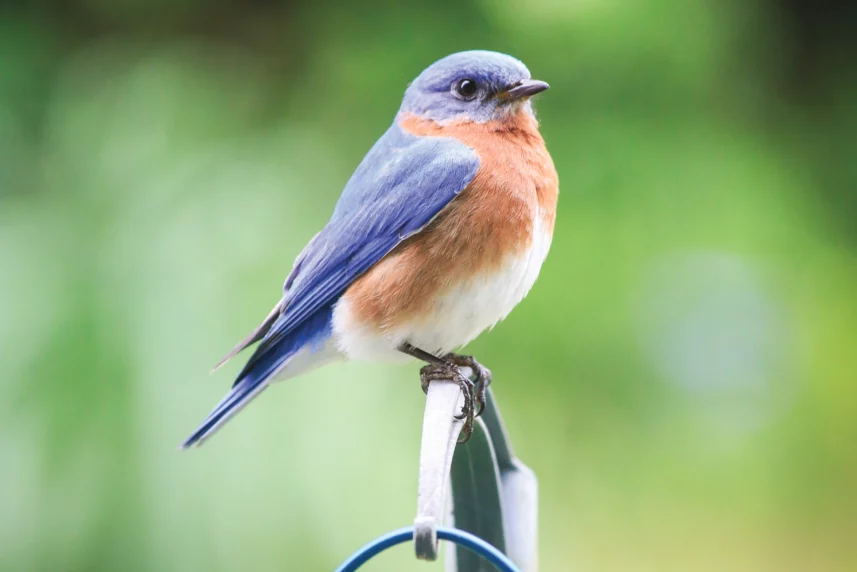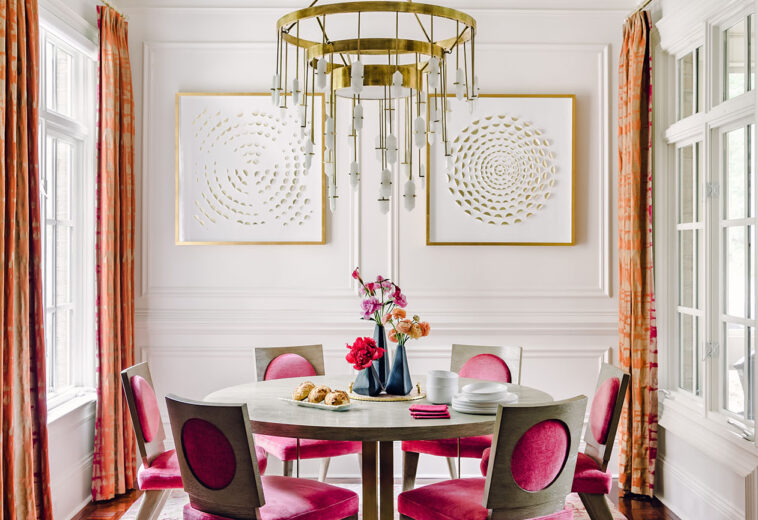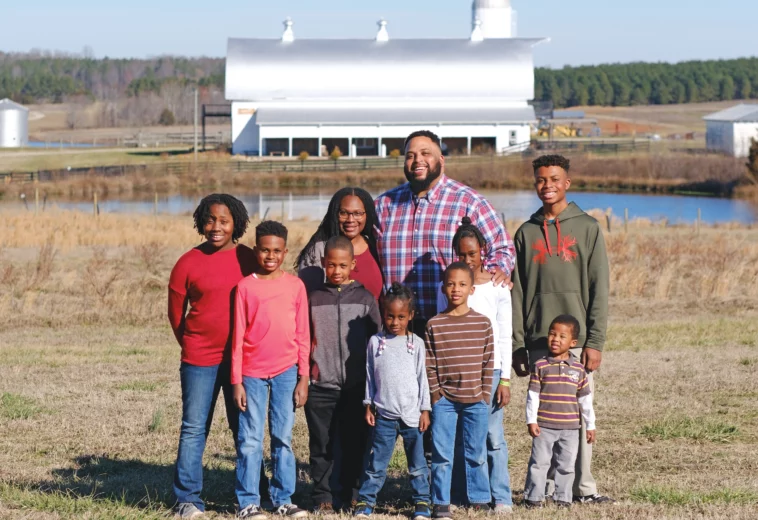Article:
BY KRISTEN SCHRUM
As winter thaws and the first hints of spring perfume the air, the Triangle slowly begins to bloom with buzzy activity across its foliage and verdure. Birds of every shape, size and color quickly flutter back into our gardens alongside azaleas, dogwoods, tulips and thick-leafed oaks. Attracting these chirping tree ornaments suddenly becomes an enchanting spring activity in which anyone can participate.
THE PROPER CARE AND FEEDING OF BIRDS
According to Lorie Dailey, owner of Wild Birds Unlimited located in Raleigh and Cary, putting up proper feed for birds is one of the easiest ways to start creating your backyard avian paradise. “If you put a feeder out with decent seed, I can guarantee sooner or later you’re going to start getting birds coming to it,” Dailey says.
Bird feeders are one of the best ways to draw birds into your yard, but in order to attract a variety of species, different feeders with different types of feed are necessary. Tube feeders remain very popular among birders; however, not all tube feeders are created equal. When choosing a tube feed, be aware of the size of the hole from which the food is dispensed. Feeders with smaller openings are generally designed for a specific seed or seed blend such as thistle seed or a fine seed blend. Though not conducive for larger birds, many birders will put up one or two of these smaller feeders specifically for the American goldfinch, a gorgeous yet elusive avian with yellow-gold feathering.
To attract a variety of birds, seed blends of sunflower seed and peanut pieces—both shelled and unshelled—prove most effective. Birds such as bluebirds, wrens and warblers are considered non-seed eaters. Their beaks are too small to open shells; therefore, they require unshelled seeds in their feed. “I love just a good overall mix where black oil sunflower is the primary ingredient,” Daily informs. “If you only want a single-seed feed, you should go with the sunflower.”
Another single-seed option is the safflower seed. “Safflower seed has a more bitter taste, but the reason why people will use safflower seed is to deter black birds and squirrels,” Daily explains. Often, you will see chickadees, cardinals and finches fly automatically to this seed to escape the hustle and bustle of other feeders.
To attract larger birds, choose tube feeders with larger openings and attachable trays. The red-bellied woodpecker, also famous for its coloring, will be attracted to peanuts from a tray feeder or suet feeders. Often dispensed from a wire cage, suet feeders mimic a natural feeding position for the birds. Suet is a compound of beef fat particularly enticing to woodpeckers, chickadees and blue jays. Birders can easily find suet, as well as other types of feed, at Wild Birds Unlimited and other such stores dedicated to birding.
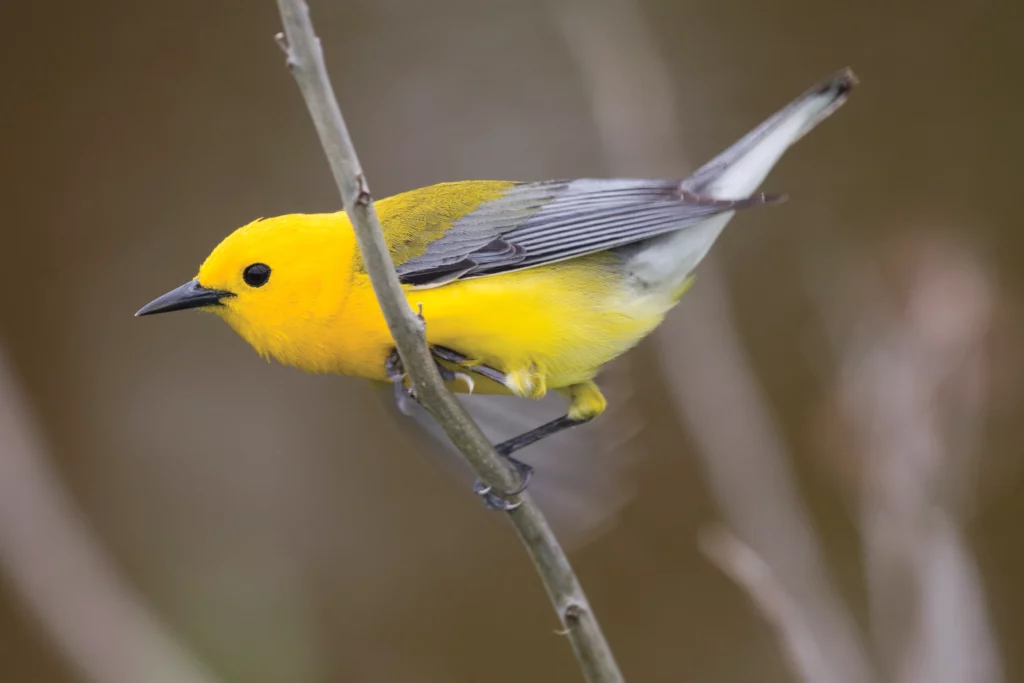
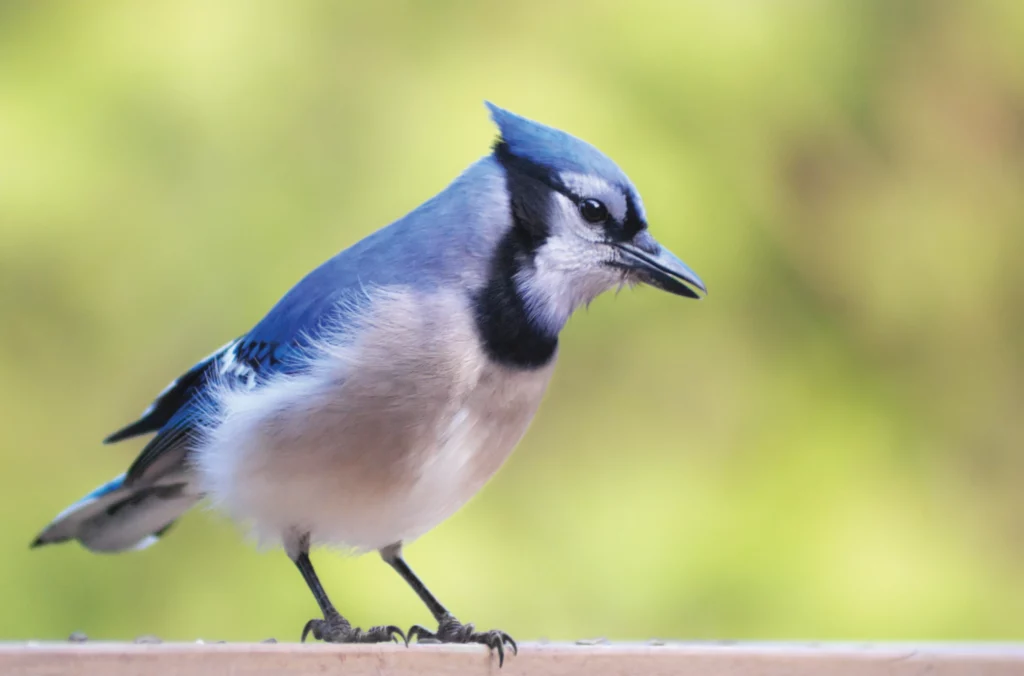
AN ACCOMMODATING ENVIRONMENT
North Carolina is home to a beautiful variety of birds that include the northern cardinal, blue jay, Carolina wren and eastern bluebird, among other famous feathery friends. In order to create the proper environment for them, however, your backyard needs to emulate a bird’s natural habitat. Planting native shrubs such as elderberry and viburnum help attract northern cardinals, which are fussed about for their dazzling red plumage and are known to circulate shrubbery woodlands.
The Carolina chickadee, meanwhile, flourishes in a backyard filled with oaks, beeches or hickory. No trees? Small log piles will do just fine. Fragrant honeysuckle and other climbing vines are another great way to attract avians such as the pileated woodpecker and eastern bluebird, which both dazzle with color. Natural and native foliage is best to use when creating a beautiful bird sanctuary. In addition, you should avoid using pesticides and planting invasive or non-native verdure, as birds are sensitive to what they consider unfamiliar.
FRESH WATER OASIS
Fresh water is not easily found in the wild, even for animals. That is why a watering hole that is fresh and clean not only attracts all kinds of birds, but makes them loyal customers to a particular area. For birders, creating fresh water sources can be done by inserting water features and bird baths into their backyard. While the options for bird baths and water features may seem overwhelming—avid birders put up everything from simple spray trays to installing backyard ponds—there are several considerations to make before committing to any water feature.
When it comes to bird baths, size matters. Small bird baths, while easy to set up, may quickly run out of water in the Carolina heat, requiring more attention, refills and maintenance. Larger baths, however, can hold more water and can be used by multiple birds simultaneously without the risk of being monopolized by one territorial species. A backyard birder will also want to consider the height of the bird bath. Taller bird baths attract smaller birds like chickadees, bluebirds and wrens, who may be looking for secure heights on which to keep an eye out for predators. Water basins sitting at ground level will attract larger ground feeders such as blue jays and woodpeckers.
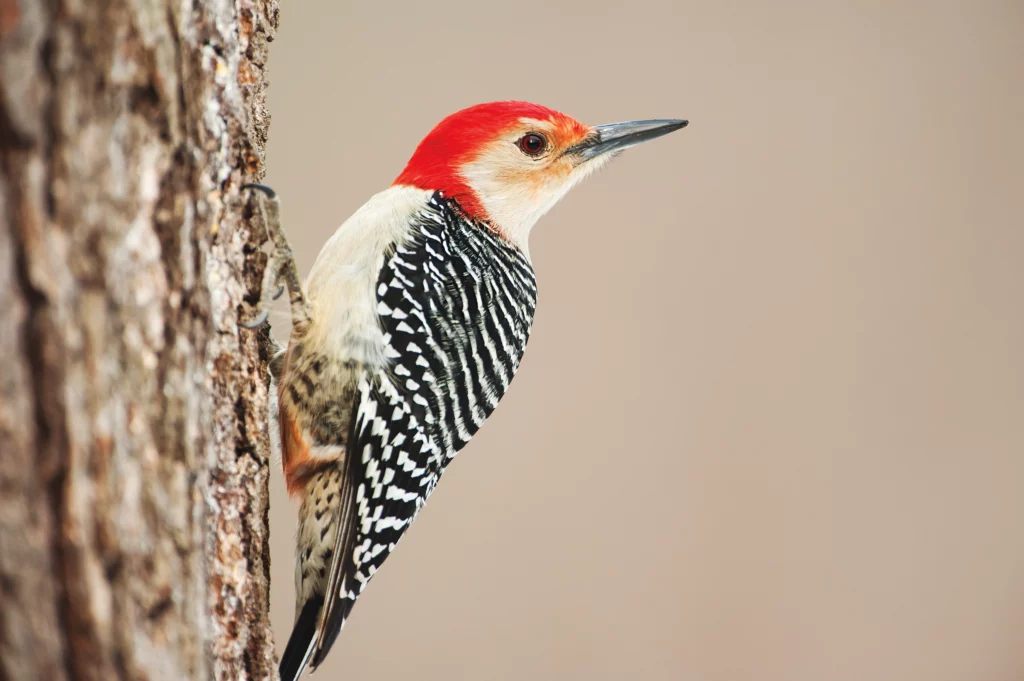
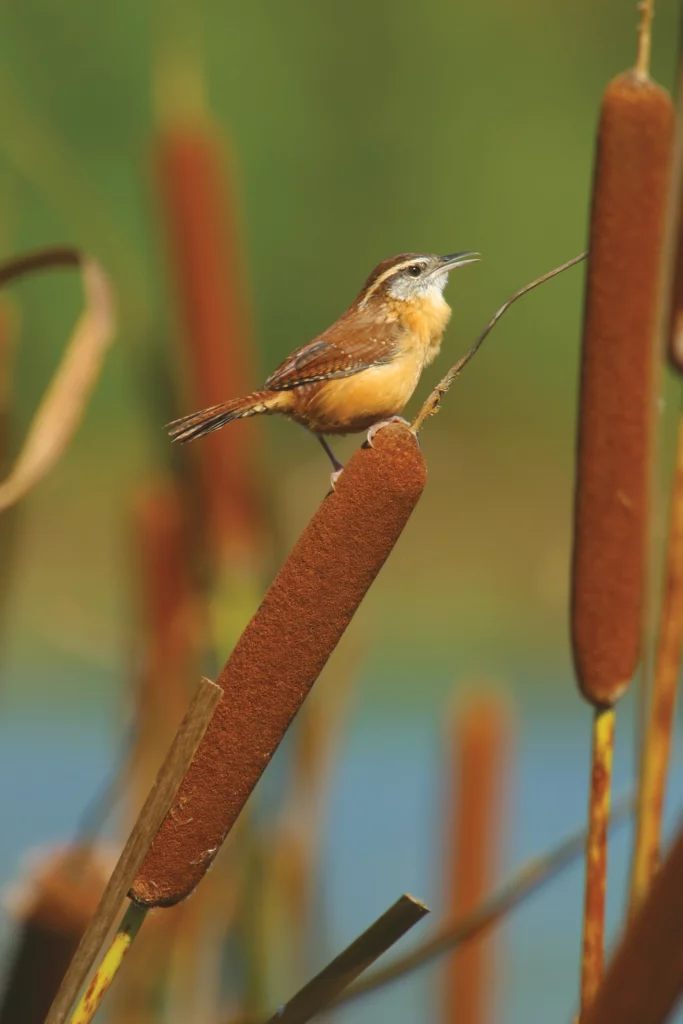
NESTING NECESSITIES
While most North Carolina birds can be found year-round, setting up birdhouses or nesting trays for birds to raise their young is an activity reserved for spring. There are many cavity birds attracted by these famous yard decorations—chickadees, nuthatches, swallows and wrens to name a few. However, Triangle bird enthusiasts love to set up birdhouses for the beloved bluebird, a gorgeous little avian with shining blue and rose beige plumage. From late February to mid-August, the bluebirds court, mate and breed. A female bluebird can have anywhere from one to three broods per season, allowing birders an entertaining spring full of hatchlings.
When choosing a birdhouse box, take into consideration its build and location, as it must be suited to the type of bird in the area. Each bird prefers a different size entrance hole. Bluebirds and swallows, for instance, favor boxes with a hole diameter of one-and-a-half inches. Meanwhile, smaller chickadees and titmice prefer a diameter of one-and-one-eighth to one-and-one-quarter inch. “I tell people that if you don’t care what kind of bird you get, get a bluebird box,” Dailey advises. “It’s going to give you your biggest opportunity.”
How and with what the birdbox is constructed also matters. Breathable materials such as natural wood create a more organic home, whereas the chemicals in pressure-treated wood deter the bird from nesting in it. Proper vent and drain holes must be present as well. Another feature to keep in mind is that a birdhouse needs to be easy to open for monitoring the birds and cleaning out the boxes when the nest has been used. Look for birdhouses with unique two-way opening systems that allow you to view the birds as they breed, hatch and grow, in addition to making the house easy to clean.
Mounting a birdhouse on a pole is best, and many birders attach a baffle to their poles in order to prevent squirrels and snakes from climbing up to it. If perched on a tree, the nest becomes more susceptible to predators.
SEASONAL BIRDS
While the Triangle’s climate facilitates a year-round habitat for most of its birds, there are a few exceptions. The warbler, one of the state’s tiny songbirds, is more commonly seen in winter, and this past November a few rare western tanagers made their appearance in the Raleigh area. Perhaps the most famous seasonal bird, however, remains the spectacular hummingbird.
The ruby-throated hummingbird is the only native hummingbird to the eastern U.S. From late October to March, hummers will fly nonstop across 500 miles of water to Central and South America, where they will spend winter. Hummingbirds generally return to the Triangle in early April, when spring grows warm and temperate.
In order to attract these gorgeous little birds, hummingbird feeders and sugar water are all you need. Hummingbird expert Susan Campbell, one of 175 licensed hummingbird banders in the U.S., suggests clustering anywhere from four to six hummingbird feeders in a single location.
Dailey echoes Campbell’s advice. “If you only put up one or two feeders, even on completely opposite sides of your yard, you’ll have one hummingbird going back and forth between those two feeders defending his territory,” she says. “But if you cluster your feeders—I can’t tell you what the magic number is—but if you have about six feeders, then one can’t be dominant.”
Hummingbirds are insect and nectar feeders; therefore, use sugar water—and lots of it—to fill your yard with the hum of iridescent feathers. It’s best to make a quart of sugar water at a time and change the feeders every other day, since sugar water can ferment in the warm Carolina heat.
Anyone can enjoy the pleasures of birding. “It can get addicting,” Daily says. With only a few feeders and an adventurous attitude, you’ll start to see a variety of birds fluttering about your garden. You’ll soon discover they are more than happy to enjoy spring with you, your family and your friends.
Learn more about Raleigh by exploring all of our articles at midtownmag.com.
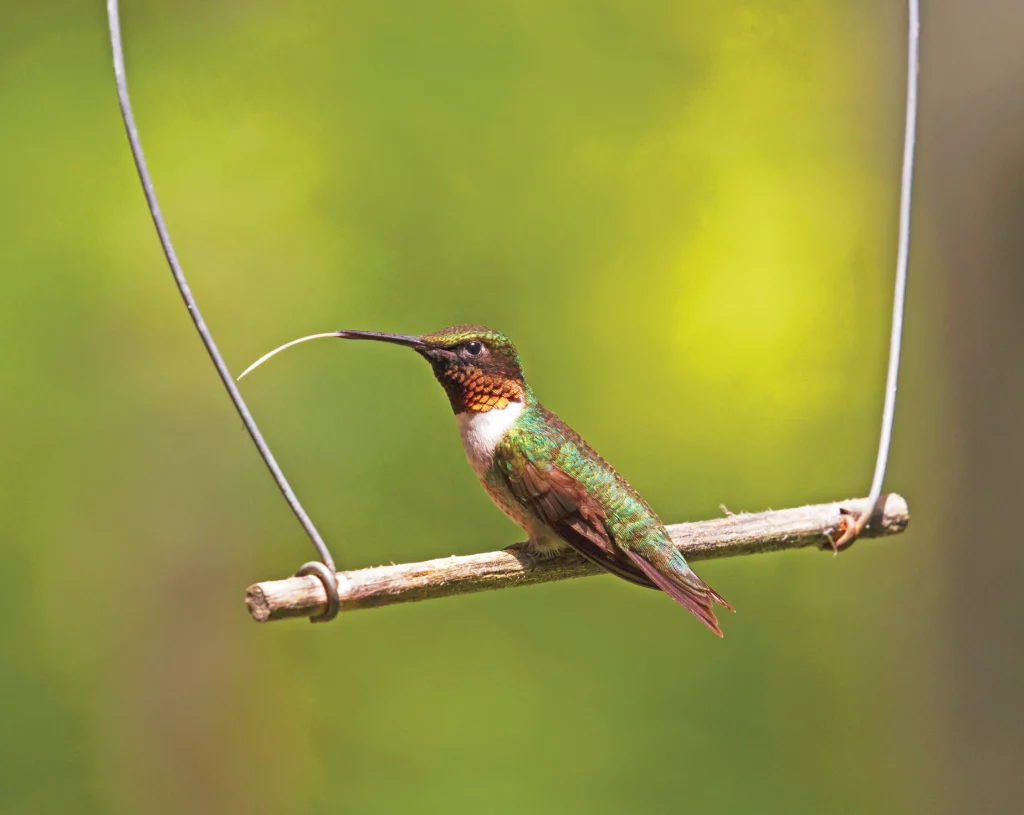
Lorie Dailey’s Recipe for Hummingbird Nectar
INGREDIENTS
4 cups of water
1 cup of sugar
DIRECTIONS
1. Bring water to a boil.
2. Take the water off the heat and let it cool for 3–5 minutes.
3. While the water is still a little warm, add the sugar and stir until it’s fully dissolved.
4. Store the nectar in containers in the refrigerator. They will keep for three to four weeks.
